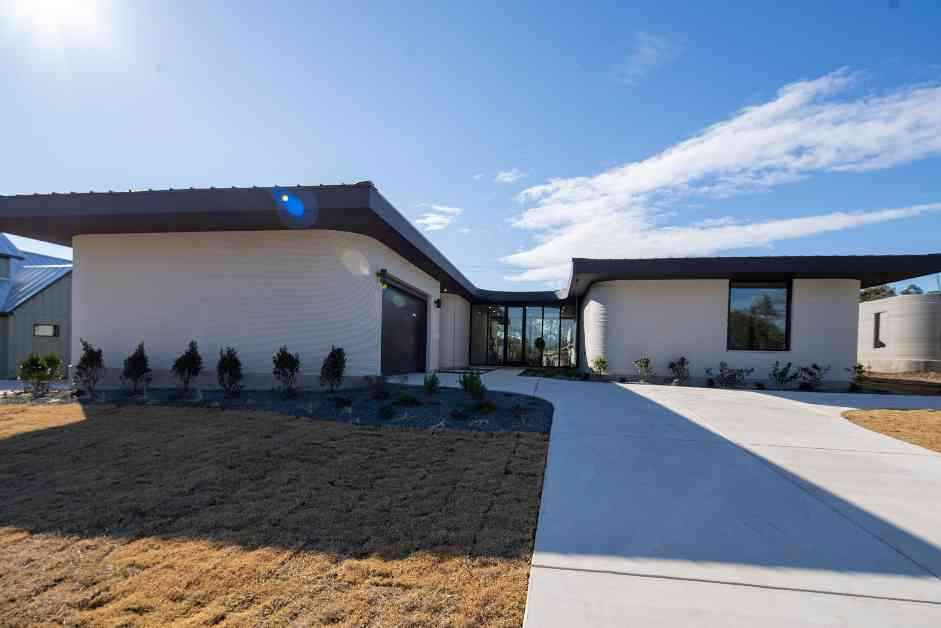Construction technology company ICON has made waves in the housing industry by completing the first fully 3D-printed house in its Wimberley Springs development, located just outside Austin, Texas. This milestone marks the company’s second venture into creating an entire neighborhood using cutting-edge 3D printing technology.
Named AlphaBeta Z, this four-bedroom, 380-square-meter (4,115-square-foot) house stands proudly at the entrance of the Wimberley Springs neighborhood in Wimberley, Texas. What sets this structure apart is not just its size, but the innovative construction process that took only five months to complete—50% faster than traditional building methods in the region, as claimed by ICON.
The house boasts a “luxurious and spacious layout” with two wings branching off a central great room, housing bedrooms on one side and public spaces on the other. The walls are constructed using ICON’s unique low-carbon cementitious material, CarbonX, sourced partially from the South Texas environment. This material is not only environmentally friendly but also contributes to the overall aesthetic of the home, with rounded corners both inside and out creating a blend of modernity and comfort.
The design of AlphaBeta Z draws inspiration from ICON’s Codex portal, a collection of 3D-printed house designs created by renowned architects like BIG. This melding of innovative technology and architectural prowess sets the stage for seven more houses to be printed in the Wimberley Springs neighborhood, offering buyers the option to customize features such as wall textures and interior color palettes.
Wimberley Springs represents ICON’s second foray into 3D-printed neighborhoods, following the success of Wolf Ranch in Georgetown, Texas, which was co-designed with BIG. The progress made in these ventures speaks to the company’s commitment to revolutionizing the construction industry through sustainable, efficient, and visually striking homes.
This groundbreaking approach to home building not only offers a glimpse into the future of architecture but also addresses pressing environmental concerns. The use of resilient concrete wall systems in these 3D-printed homes reduces heat transfer, leading to increased energy efficiency and decreased reliance on traditional heating and cooling systems. This dual focus on innovation and sustainability sets a new standard for residential construction that other developers are sure to take note of.
As the neighborhood continues to take shape, with seven more houses in the pipeline, the residents of Wimberley Springs can look forward to a blend of cutting-edge design and eco-friendly living. The success of ICON’s 3D-printed homes not only marks a significant achievement in construction technology but also paves the way for a more sustainable and aesthetically pleasing future in the housing market.












